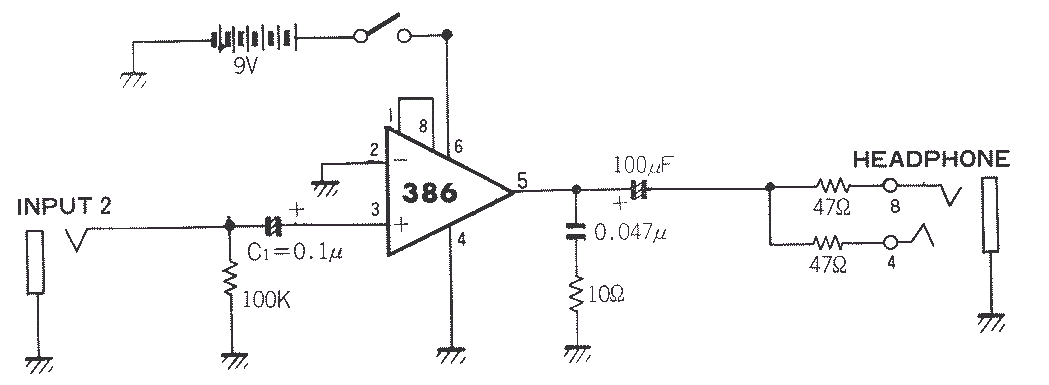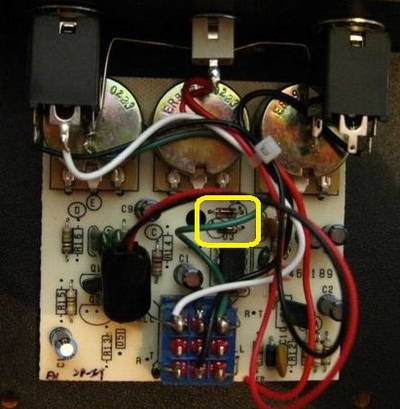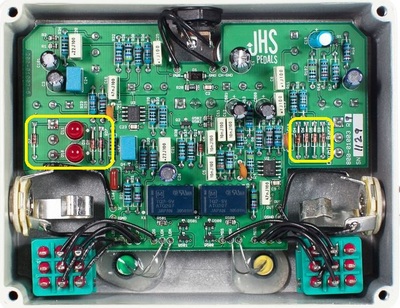|
Yes it's mono. If you want to turn it into stereo, you could build two of these. One powers the tip, and the other the ring. The original schematic appeared in a Japanese book with a lot more filtering in place. I simplified it for almost anyone to be able to build this easily. The 386 is a very robust and forgiving chip. A 9 volt battery will work fine, but a guitar pedal power supply would be good too if you don't mind the wallwart. The chip is an LM386 - which is readily available almost anywhere you can get electronic parts. I recommend using a socket for the chip to make the build easier and more successful. This circuit features a low parts count and can be made for about $10. If you see any corrections or additions that need to be made, please feel free to comment below. Note: If you'd rather have a volume control, you could add one right before the 1/4" out. If you build a stereo version, a stereo potentiometer would be a great addition. Either way, a 100k, audio log potentiometer would work. 1/2 watt is ideal and will work fine. If you are not for sure how to build anything electronically, I have temporarily left my electronics page open for a limited time so that you can learn!
0 Comments
Disclaimer: The truth is, I use compression on electric guitars a lot too when I mix...but this is an article about thinking through your own mix decisions before you do them. Don't just do something just because you've always done it that way. So, why not always compress electric rhythm guitars? Here's the reasoning behind it: Compressor pedals on pedalboards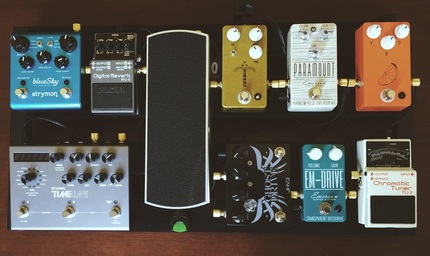 1. Most guitarists (especially on a professional level), already have compressor pedals on their pedalboards, and usually they are left on all the time. No, I am not saying everybody has compression on all the time, but I am just saying that it is very common. Stay with me here folks... the inherent compression aleady found in overdrive pedals2. Overdrive pedals already compress the signal coming from the guitar. I used to design and build boutique guitar pedals for a now defunct boutique pedal company. I have built pedals for a lot of big names in the industry (name dropping is cheeeezy - so I'll spare you). When I would voice a pedal, I would get comments like - "I need the signal to be less compressed when I really dig in," or "could you give it more of a mid-bump please?" All of these types of things can easily be tweaked. Check this out: All of the above pictures, are the guts of some very popular overdrive and distortion boxes. All of them get that clipping sound from an electronic component called a diode. Different types of diodes will yield different types of clipping. In the case of the Rat and the Distortion +, the clipping is usually a little "harder" sounding. In the case of the Boss SD-1, the clipping is smoother and asymmetrical (like a tube amp). The JHS Double Barrel has the ability to select the type of clipping you'd like. Notice the L.E.D.'s shown in the yellow box on the JHS pedal. Yes, L.E.D.'s are used to obtain clipping. L.E.D. stands for "light emitting diode." All this to say, that when diodes are pushed, they "clip" the guitar signal - thus giving you that glorious overdrive sound we all love, but by the very nature of the design, the byproduct is compression as well! tube compression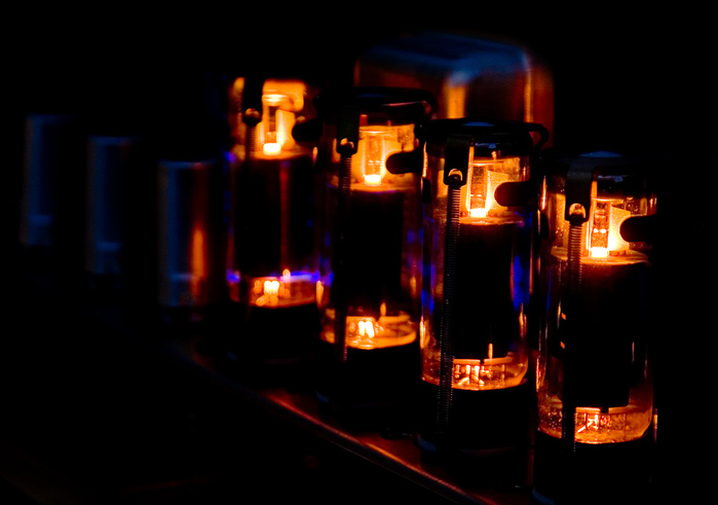 Guitar tube amplifiers are known for their ability to provide a pleasing compression & this is due to a number of factors in the circuit. Research amplifier "sag," the effect of output transformers in guitar amplifiers, and tube compression. Other cool terms to research would be even-order harmonics, and asymmetrical clipping. 3. Guitar amplifiers can/will naturally compress a guitar signal. This is especially true of tube amps. One of the reasons for this is gain compression. "A tube amplifier will increase in volume to a point, and then as the input signal extends beyond the linear range of the device, the effective gain is reduced, altering the shape of the waveform." This effect is also present in transistor circuits. The extent of the effect though, depends on the topology of the amplifier. With the plethora of circuit topologies of guitar amplifiers, there can be other contributing factors of compression (like output transformers & etc), but I think you get the basic idea. electro-mechanical compression I'm givin' it all she's got cap'n! I'm givin' it all she's got cap'n! 4. Electromechanical compression is a real, but hard phenomenon to measure . This would include guitar pickup compression, speaker compression, microphone diaphragm compression, etc. This is where stuff gets really fascinating. Basically, when you take a device beyond its' normal tolerances, the signal will either be clipped, and/or the top-most part of its dynamic range will be compressed. Acoustic guitars will do this as well. Once you play an acoustic guitar loud enough, and beyond the point where it can effectively reproduce the sound, the soundboard of the guitar (top part where the bridge rests), will mechanically "stabilize" into a slimmer vibrational constant; thus giving the effect of compression. With that said, does this mean that you should NEVER add compression to rhythm guitars? No i'm not saying that, and we all know that there are no rules on this, but hopefully this will give you some insight next time you reach for that compressor. You should always be mixing towards a sonic goal, rather than just adding effects because that's what you always do. Be thoughtful in your approach. Make wise mixing choices rather than habitual choices. Your mixing will become more effective and cleaner because of it!
|
Do you like vintage recording gear and articles? You should visit our sister site: The Vintage Audio Portal!
**Advertise With Us! We have thousands of visitors a day. Contact us here to learn more.
Archives
August 2021
Categories |
